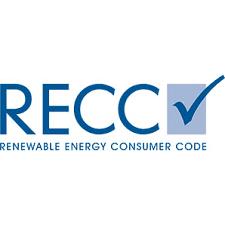The Do’s and Don’ts of DIY Electrical Repairs
Welcome to our latest blog post, discussing the do’s and don’ts of DIY electrical repairs. As experienced domestic electricians, we often encounter homeowners who have attempted to fix electrical issues themselves, only to end up causing more damage or putting themselves at risk.
While we understand the desire to save money and take matters into your own hands, it’s essential to approach electrical repairs with caution. In this post, we’ll outline six key points to consider when tackling DIY electrical work, providing you with the knowledge and guidance to proceed safely and effectively.
Know Your Limits
Having a clear understanding of your abilities is vital for DIY electrical repairs. While certain tasks may appear simple, it is crucial to acknowledge the potential dangers associated with working with electricity.
Therefore, it’s essential to know your limits and understand which tasks you can safely handle and which should be left to professional electricians.
Simple Repairs
There are certain electrical tasks that a knowledgeable homeowner can undertake. These are typically simple repairs or installations that don’t involve extensive wiring or high-voltage equipment. Some examples include:
- Replacing light bulbs
- Changing a fuse in a plug
- Installing light switches
- Fixing a loose power socket
These tasks are generally safe for a DIY enthusiast to handle, provided they follow all safety precautions and guidelines.
Complex Repairs
On the other hand, complex electrical tasks should always be left to a professional electrician. These tasks involve extensive wiring, high-voltage equipment, or your home’s electrical system modifications. Some examples include:
- Rewiring your home
- Installing new circuits
- Upgrading your electrical panel
- Handling high-voltage equipment
These tasks require high knowledge and expertise to be carried out safely and effectively. Attempting these repairs without the necessary skills can lead to serious safety risks, including electrical shocks and fires.
Understanding Part P of the Building Regulations
In the UK, Part P of the Building Regulations guides electrical safety and outlines the types of electrical work a competent person must do. This includes any new electrical work and changes to wiring and electrics in any dwelling.
The regulations aim to minimise fatalities, injuries, and fires from defective electrical installations. They also guarantee that any electrical work conducted in the residence is designed and implemented to safeguard individuals against electric shocks. These regulations apply to both homeowners and anyone entering the premises.
It’s important to note that if you carry out electrical work yourself and an electrical fault causes damage to your home, your home insurance may be invalidated if you cannot provide a minor certificate of work for it.
Therefore, before starting any DIY electrical work, you must understand your limits and comply with all relevant regulations. If in doubt, always seek the help of a professional electrician.
Safety First
Regarding DIY electrical repairs, safety should always be your first consideration. Electrical work can be hazardous without the necessary care and caution. Therefore, it’s crucial to understand and implement the essential safety precautions before starting any DIY electrical repair.
Turn off the Power
Before you begin any electrical work, turning off the power is paramount. This can be done by locating the circuit breaker and switching off the power to the relevant area. To confirm that the power is indeed off, use a voltage tester. This is a simple device that can detect electrical currents in a circuit.
Once you’ve confirmed the power is off, lock or tag the circuit breaker to prevent anyone from accidentally reactivating it while you’re working.
Use the Right Tools
Using the right tools is essential for your DIY project’s success and safety. Insulated screwdrivers, voltage testers, and wire strippers are some of the basic tools you’ll need. Also, don’t forget to wear safety goggles and gloves.
Be Aware of Asbestos
A study conducted in the UK revealed that homeowners, including those who practise DIY, have dangerous misconceptions about the presence of asbestos in residential properties and have a poor grasp of essential safety precautions necessary for dealing with it.
Asbestos was frequently used in construction materials from 1950 to the mid-1980s, and specific forms were prohibited until 1999. Therefore, inspecting asbestos-containing materials before undertaking DIY projects if your home was constructed during this timeframe is crucial. If you discover asbestos, seeking professional guidance on its safe disposal is essential.
Following these safety precautions ensures that your DIY electrical repairs are conducted safely and effectively. Remember, safety should never be compromised when it comes to electrical work.
Do Your Research
Before attempting DIY electrical repair, you must arm yourself with as much information as possible about the task. This is not a task to be taken lightly; electricity can be dangerous if not handled correctly.
Therefore, thorough research is not just recommended; it’s essential.
Consult Your Home’s Wiring Diagram
Your home’s electrical blueprint is valuable when planning any electrical work. This diagram provides a detailed layout of your home’s electrical system, including the location of outlets, switches, and light fixtures. It can help you understand how your home’s electrical system is structured and identify potential hazards or challenges.
Numerous resources are available for those unfamiliar with electrical blueprints to help you decipher these diagrams. One such resource is the Do-It-Yourself-Help website’s House Wiring Diagrams and Project Guides page. This site provides a wealth of information on various household electrical outlets, switches, and circuits, making it an excellent starting point for your research.
Seek Guidance From Reputable Sources
In addition to your home’s wiring diagram, countless other resources are available to assist you with your DIY electrical repair project. Online tutorials and videos can provide step-by-step instructions for many common electrical repairs. DIY forums are another great resource, offering advice and tips from other DIY enthusiasts who have undertaken similar projects.
Professional electrician blogs and websites can also provide valuable insights. For example, the DIY Doctor website offers a comprehensive range of DIY electrical projects, covering everything from wiring and circuits to switches and sockets. This UK-based site focuses on safety and provides detailed instructions for various electrical tasks.
Remember, when conducting your research, it’s important to ensure the information you’re using is accurate and up-to-date. Always cross-reference information from multiple sources and, when in doubt, consult a professional. DIY electrical work can be rewarding, but it’s essential to prioritise safety above all else.
Obtain the Necessary Permits
Before you begin any DIY electrical repairs, it’s crucial to understand the legal requirements surrounding this type of work.
In the UK, Part P of the Building Regulations stipulates that fixed electrical installations in domestic dwellings must comply with the IEE (Institute of Electrical Engineers) wiring regulations. This means that certain types of electrical work must be certified for safety.
When is a Permit Needed?
Not all electrical work requires a permit. However, you will need one for the following:
- The addition of any new circuits.
- Any work (except repairs or replacements) in a kitchen, bathroom, or outdoors.
- Significant electrical upgrades.
- Adding new circuits.
- Altering existing wiring.
If you’re unsure whether your planned work requires a permit, it’s always best to seek professional advice or consult your Local Authority.
How to Obtain a Permit
If your electrical work does require a permit, you have two options:
- Inform your local building control department. An inspector will be dispatched to evaluate the project and issue a certificate to validate its safety. Please be aware that there may be a fee associated with this service.
- Choose an electrician who is a member of an authorised competent person self-certification scheme from NICEIC, ECA, or ELECSA. They will notify the local authority on your behalf and provide you with the legally required certification, confirming the work is safe in accordance with the regulations.
Safety should always be your top priority when dealing with electrical work if you’re unsure about any aspect of the process.
Be Prepared for Unexpected Complications
Preparing for unexpected complications is crucial when embarking on a DIY electrical repair. Electrical systems can be complex, and what may initially seem like a straightforward repair can quickly become a more significant issue.
Common Complications
Damaged Wiring
A prevalent challenge faced during DIY electrical repairs is damaged wiring. This can result from ageing, deterioration, or previous improper installations. Damaged wiring can give rise to a range of problems, including intermittent power loss and potential fire hazards.
For instance, a common error is when the bare ends of the wires don’t make full contact, especially when more than two wires are joined. This can prevent a plug or light from working and cause arcing, which can start a fire. To avoid this, holding the wires firmly while twisting them together is essential and ensuring the wires are making good contact.
Faulty Connections
Faulty connections are another common complication. These can occur when the wrong size wire nut is used, resulting in a loose connection or leaving the bare wire exposed outside the wire nut. This can increase the chance of a short circuit and arcing.
Outdated Electrical Systems
Outdated electrical systems can present challenges as well. Older systems may not meet current safety standards, and components could be worn or deteriorated. This can increase the likelihood of electrical faults and potential safety hazards.
When to Call a Professional
While taking on DIY projects is admirable, knowing when to call a professional is also important.
- If you feel unsure or unqualified: Electrical work can be dangerous, and it’s safer to call a professional if you’re not confident in what you’re doing.
- If the issue is beyond your capabilities: Some electrical repairs require specialist knowledge and tools. If you encounter a problem beyond your capabilities, don’t risk it; call a professional.
- If additional problems are discovered during the repair: If you uncover further issues, such as damaged wiring or outdated systems, it’s advisable to seek professional help. A professional electrician can fully assess and repair the situation safely and effectively.
Safety should always be your top priority when dealing with electrical repairs. It’s better to call a professional and ensure the job is done correctly and safely than to risk causing further damage or potential harm.
Regular Maintenance is Key
Regular maintenance is crucial for ensuring the safety and efficiency of your electrical system. By closely monitoring your home’s electricity, you can prevent minor issues from developing into significant complications. This section will explore the significance of regular maintenance and offer practical suggestions to maintain your electrical system in optimal condition.
Regular Inspections
Regular inspections are a crucial part of electrical maintenance. You can identify and rectify issues by routinely checking your electrical system before they escalate. Here are some key areas to focus on:
- Damaged or Frayed Wiring: Damaged wiring is a frequent source of electrical problems and can present a special fire hazard. Regularly inspect your wiring to identify any signs of damage, such as fraying or discolouration, and promptly replace any compromised wires.
- Power Sockets and Switches: Regularly test your power sockets and switches to ensure they function correctly. If a socket or switch is not working, it could indicate a problem with your wiring.
- Electrical Panel: The electrical panel is the core of your home’s electrical system. Conduct routine inspections to identify any signs of wear or damage. If you detect any problems, such as a tripped breaker or a burnt odour, promptly seek assistance from a qualified electrician.
Stay Vigilant
Staying vigilant is key to maintaining a safe and efficient electrical system. Here are some tips:
- Address Issues Promptly: Take immediate action when you identify an issue with your electrical system. Neglecting the problem may result in more severe consequences in the future.
- Pay Attention to Warning Signs: Warning signs like flickering lights or buzzing sounds may indicate an underlying electrical problem. If you observe any of these signs, it is important to seek professional assistance.
- Schedule Professional Inspections Periodically: While regular DIY inspections are essential, it’s also important to schedule professional inspections periodically. A certified electrician can identify issues you may have missed and provide expert advice on maintaining your electrical system.
Remember, electricity is dangerous and can cause fires, burns, and even death. Therefore, always switch off the main power at the consumer unit (fuse box), isolate the circuit you will be working on, and check that a circuit is dead using a socket or a voltage tester before beginning any work. It’s always best to consult a professional if unsure about anything.
Refer to this guide for more detailed information on basic domestic electrics.
Conclusion
In conclusion, DIY electrical repairs can be a cost-effective way to address minor issues within your home. However, it’s crucial to approach these tasks with caution, ensuring that you have the necessary knowledge, tools, and permits before starting any work.
By recognising your boundaries, prioritising safety, and conducting comprehensive research, you can effectively navigate the realm of DIY electrical repairs. Remember that regular maintenance is crucial to prevent significant electrical issues, and if you encounter unforeseen complications or feel overwhelmed, don’t hesitate to contact us.
If you require assistance with your electrical repairs or maintenance, please don’t hesitate to contact our team of experienced domestic electricians. We’re here to help you keep your home safe and functioning efficiently.








